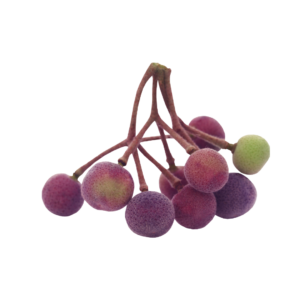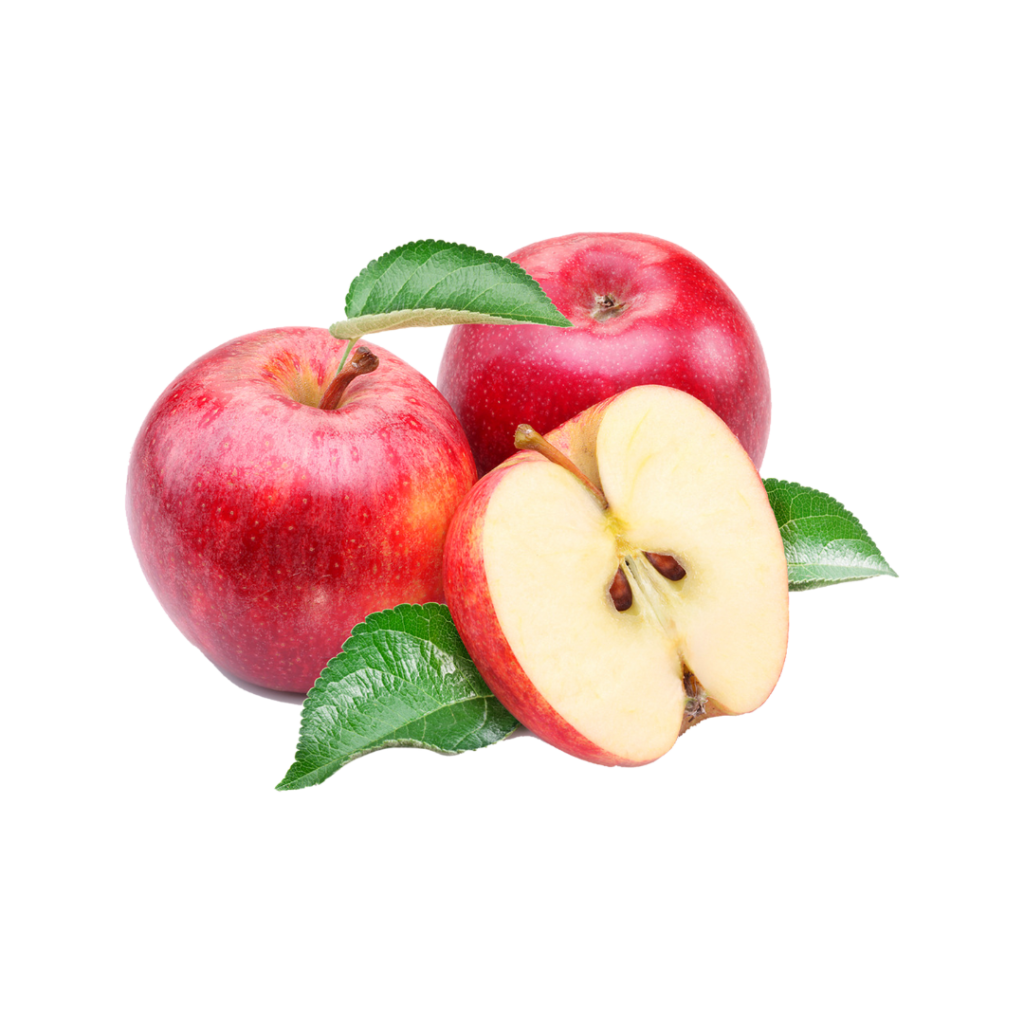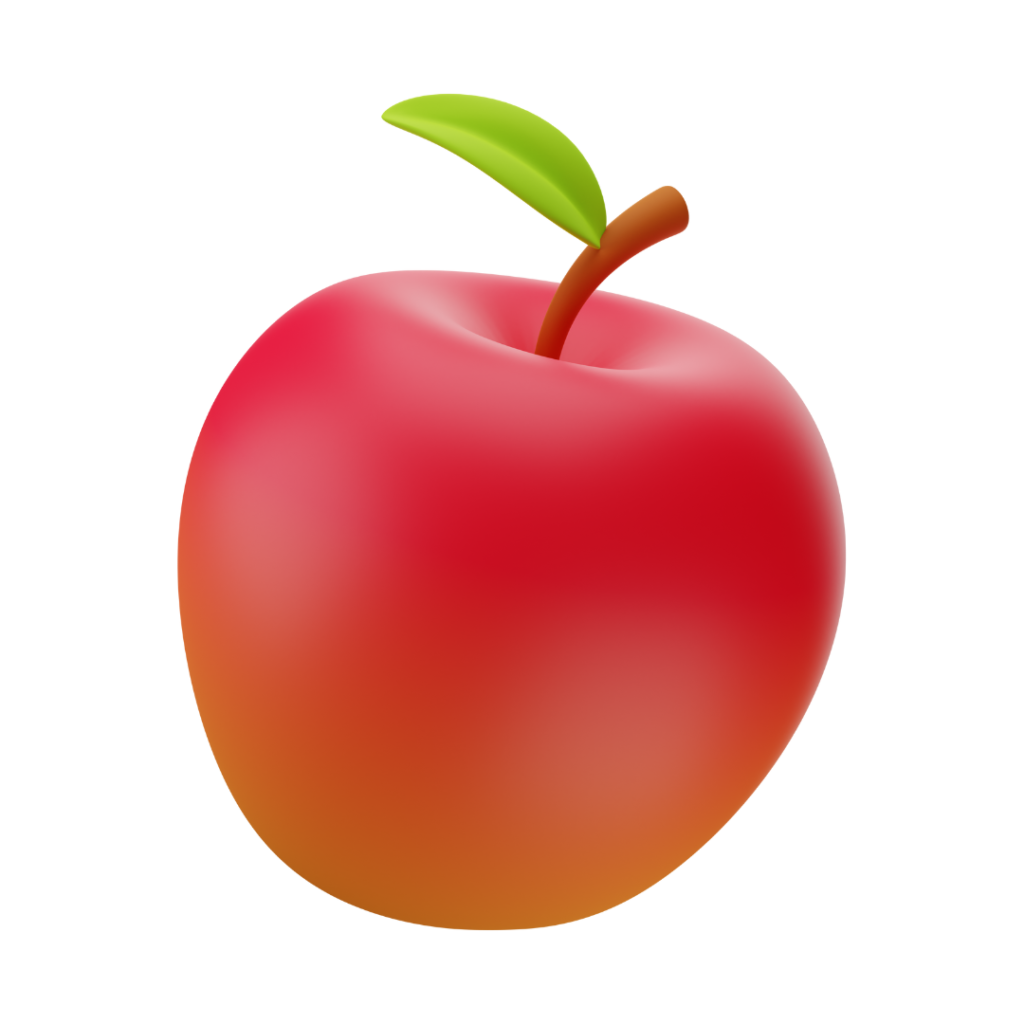- Area & Production
- Cultivation
- Varieties
- Training & Pruning

Suggested Readings
Table of Contents
Introduction to Phalsa
Phalsa (Grewia asiatica L.) is a hardy, drought-tolerant fruit crop that thrives in tropical and subtropical regions. It is a small, bushy plant that produces edible berries with a unique sweet-tart flavor. Phalsa is widely cultivated in India, Pakistan, and other parts of South Asia, where it is highly valued for its nutritional and medicinal properties. This comprehensive guide will provide detailed information on the cultivation, propagation, management, and utilization of phalsa.
Phalsa Crop Overview
- Scientific Name: Grewia asiatica L.
- Family: Tiliaceae
- Description: One of the oldest known fruits in India, cultivated as a minor fruit crop in subtropical and tropical areas.
- Medicinal Properties: Mentioned in Vedic literature for its medicinal qualities, including high antioxidant properties.
Regional Names
- Hindi: Phalsa, dhami, parusha, shukri
- Punjabi: Dhaman
- Assamese: Man-bijal
- Marathi and Gujarati: Phalsa
- Oriya: Mirgi chara, pharasakoli
- Telugu: Jana, nallijana, phutiki
- Tamil: Palisa, tadachi
- Kannada: Buttiyudippe, tadasala
Distribution
- Phalsa is native to the Indian subcontinent and Southeast Asia. It was introduced to the Philippines before 1914 and has become naturalized in the dry zones of the Luzon island.
- In the early 20th century, phalsa was introduced to Indonesia and the East Indies.
- Apart from India, phalsa is cultivated in Pakistan, Nepal, Bangladesh, Laos, Sri Lanka, Thailand, Philippines, Vietnam, and the USA.
- In India, phalsa is commercially cultivated mainly in the states of Punjab, Haryana, Rajasthan, Uttar Pradesh, and Madhya Pradesh. It is also grown on a limited scale in Maharashtra (around Mumbai), Gujarat, Andhra Pradesh, Bihar, and West Bengal.
- Phalsa is found growing wild in various parts of India, including Uttar Pradesh, Rajasthan, Punjab, Haryana, Madhya Pradesh, West Bengal, and many parts of South India.
Area and Production
- The total area under phalsa cultivation is less than 1000 hectares.
- In Punjab, phalsa is reported to be grown on an area of 36 hectares, with an annual production of approximately 196 tonnes.
- Current statistics on the area and production of phalsa are not readily available, suggesting a need for more comprehensive data collection.
The nutritional composition of phalsa fruit (per 100g edible portion) is as follows
Nutritional Composition
- Calories: 90.5 kcal
- Protein: 1.57%
- Total lipid (fat): <0.1g
- Moisture: 80.8%
- Carbohydrate: 21.1%
- Ash: 1.1g
- Fiber: 5.53%
- Calcium: 136mg
- Iron: 1.08mg
- Phosphorus: 24.2mg
- Potassium: 372mg
- Sodium: 17.3mg
- Iron: 3.1mg
- Vitamin A: 16.11μg
- Vitamin B1: 0.02mg
- Vitamin B2: 0.264mg
- Vitamin B3: 0.825mg
- Vitamin C: 4.385mg
Botany & Taxonomy
Botany
- Growth Habit: Shrub or small tree, typically 3-4 meters in height.
- Leaves: Simple, alternate, ovate, and dark green.
- Flowers: Small, yellow, in axillary cymes.
- Fruit: Small, round, purplish-black drupes when ripe.
Taxonomy
- Phalsa belongs to the order Malvales and the Tiliaceae family, which includes 18 genera and 400 species.
- In the Tiliaceae family, only the genus Grewia yields edible fruits.
- The botanical name of phalsa is Grewia subinaequalis D.C. (synonyms: G. asiatica Mast; G. hainesiana Hole), which was previously known as Grewia asiatica L.
- The closest relative of phalsa is Grewia elastica var. vastita, found in valleys and small hills.
- Apart from Grewia subinaequalis and Grewia elastica, there are around 400 species in the genus Grewia, of which 40 species occur in India.
- Some other important species in the genus Grewia include Grewia glabra, Grewia micrococas, Grewia optiva, Grewia tilifolia, and Grewia belosa.
The taxonomic classification of phalsa is as follows:
- Kingdom: Plantae
- Phylum: Magnoliophyta
- Class: Rosopsida
- Order: Malvales
- Family: Tiliaceae
- Subfamily: Grewioideae
- Genus: Grewia
- Species: asiatica/subinaequalis
Soil and Climate
Soil
- Phalsa can be grown on a wide range of soils, from fine sand and clay to even limestone, making it suitable for profitable cultivation in various soil types.
- It can be grown on moderately sodic soils.
- Phalsa can be cultivated on soils with poor fertility.
- The ideal soil pH range for phalsa cultivation is 6.0-8.5.
- Well-drained, loamy soils are suitable for phalsa growth.
- Plants are sensitive to waterlogging conditions, which can result in chlorosis.
- Iron chlorosis is a common problem in calcareous soils.
Climate
- Phalsa is a hardy plant that can withstand drought and can be grown under adverse climatic conditions.
- It is grown as a rainfed crop.
- Phalsa is easily grown in tropical and subtropical climates.
- It can be grown up to an elevation of 900 m above mean sea level.
- The crop has low water requirements and is drought-resistant, tolerating high temperatures up to 45°C.
- It can also withstand freezing temperatures for a few days and light frosts.
- The plant sheds its leaves and undergoes dormancy during winter in some regions, while in warm regions, it does not shed leaves, and there is no dormancy.
- Higher temperatures during June help in fruit ripening and development of quality fruits.
- Rains during the flowering period affect fruit set and crop yield.
- Phalsa can also thrive well in the humid tracts of coastal India.
Propagation and Rootstock
Seed Propagation
- Phalsa is mainly propagated by seeds. Around 1 to 2 kg of seeds are required for raising seedlings for one hectare of area.
- Freshly extracted seeds are used for raising seedlings.
- Seeds are collected from fully ripe, purple-black colored fruits when the crop is ready in May or the beginning of June.
- Seeds are extracted by mashing the ripe fruits and washing them with water to remove the peel.
- The extracted seeds are dried in the shade.
- Seeds lose their viability under ordinary storage conditions after 90 to 100 days.
- Seed viability can be retained for up to six months under cold storage conditions.
- The extracted seeds are sown in suitable media or on raised beds during the rainy season.
- Seeds are sown in lines 10-15 cm apart, with a distance of 4-5 cm between seeds and a depth of 1.5 to 2 cm.
- Seeds are covered with sand or light soil mixed with well-rotten and dry farmyard manure.
- Freshly extracted seeds require 15-20 days for germination.
- Germination can be hastened by soaking the seeds in water for 24 hours.
- Seeds treated with 100 ppm GA3 showed early germination.
- Beds are watered regularly, avoiding excess watering.
- Drenching beds with 1% Bavistin solution after seed germination prevents the attack of Pythium.
- Drenching with Dursban 20 EC (Chloropyriphos) at 10 ml per liter of water after 30 days of seed sowing is carried out to check white ant attacks.
- Beds are kept free from weeds by hand weeding.
- Seedlings, when 5-7 cm tall, are top-dressed with calcium ammonium nitrate or ammonium sulfate.
- Seedlings are ready for transplanting in the field within 3-4 months.
Vegetative Propagation
Phalsa can also be propagated by vegetative means, with hardwood cuttings, layering, and softwood grafting being the main methods used.
Hardwood Cuttings
- Phalsa is easily propagated by hardwood cuttings, which is a convenient and cost-effective method to obtain true-to-type, fully developed plants in a shorter time.
- The type of cutting and planting date influence the rooting of phalsa cuttings.
- The use of synthetic auxins like IBA has been reported to improve rooting in phalsa cuttings, which are difficult to root.
- Hardwood cuttings of phalsa treated with 100 ppm IBA for 24 hours gave 60-70% success in rooting.
- Hardwood cuttings treated with 200 ppm IBA showed the best rooting, while semi-hardwood cuttings failed to root.
- Treatment of hardwood cuttings with 2000 and 3000 ppm IBA significantly increased root length, number of roots per cutting, and percentage survival.
- Higher rooting has been reported with long dips (24 hours) in low concentrations of IBA and NAA, as well as quick dips (5 minutes to 2 hours) in higher concentrations (1000 to 10000 ppm) of IBA, NAA, or their combinations.
- Rooting media with biofertilizers has been found successful in rooting semi-hardwood cuttings of phalsa (10-20% rooting).
- Maximum rooting (70.55%) with maximum root numbers, root length, and field survival percentage (37.82%) was observed in hardwood cuttings dipped in 200 ppm IBA solution for 24 hours.
Layering
- Phalsa can be propagated vegetatively by ground or simple layering and air layering or marcotting.
- In ground layering, maximum success (50%) was obtained with 15000 ppm IBA treatment.
- In air layering, 85% success was achieved when the air layers were treated with a mixture of 15000 ppm IBA + NAA, while 5000 ppm IBA alone recorded 80% rooting.
- NAA alone did not have any effect on rooting in air layering.
Softwood Grafting
- In situ softwood grafting on a rootstock of minimum one-year age was recommended by many workers, as it gave 100% success.
- Defoliation of the scion one to two weeks prior to grafting was found to increase the success of grafts.
Layout and Planting
- The best planting season for phalsa is the onset of the monsoon. However, it can also be planted in January and February when the plants are in a dormant condition and have shed their leaves.
- Phalsa is a small, bushy-type fruit crop and can be planted at a distance of 2.5-3 m from plant to plant and 3-4 m from row to row.
- Phalsa is well-suited for close planting.
- The recommended planting distance is 2.5 x 2.5 m or 3.0 x 3.0 m for planting phalsa as a sole crop, accommodating 1000 to 1500 plants per hectare.
- Yields have been found to increase with an increase in plant density.
- Paired row planting (double row) is also suggested by some workers to increase plant population.
- Plants can also be planted at a distance of 2 x 2 m in a square planting system, accommodating 2500 plants per hectare.
- Close planting at 1.0 x 1.5 m apart in lines is also recommended.
- High-density planting in phalsa using Needlers fan design under semi-arid conditions was successful, giving a maximum benefit-cost ratio of 2.78 with a planting distance of 3 x 0.4 m, accommodating 8333 plants per hectare.
- Pits of 60 x 60 x 60 cm size are filled with topsoil and 10 kg of farmyard manure (FYM) per pit.
- Seedlings of 8 to 12 months of age, prepared in the nursery, are selected for planting in the main field.
Irrigation
- Phalsa is mainly grown as a rainfed crop, but it is a drought-tolerant fruit crop, and light irrigation in summer helps increase fruit yield and quality.
- Light irrigation during the fruit development stage in the month of May is found beneficial.
- Depending on the soil type and climatic conditions, irrigation is given at intervals of 15-20 days.
- Irrigation is needed in the second or third week of February after the application of fertilizers.
Nutrient Management
- Phalsa is considered a hardy crop and is rarely fertilized, as it is a stress-tolerant plant.
- Although phalsa can be grown successfully in low-fertility soils, the application of manures and fertilizers increases productivity.
- Phalsa shows a good response to nitrogen application, as it encourages new shoot growth and enhances yield.
- High levels of phosphorus increase the sugar content in the fruit, while potassium suppresses sugar and promotes acidity.
- In Punjab, the application of 1 kg N per plant is considered ideal.
- In Uttar Pradesh, the recommended dose is 50:25:25 g N, P, and K per plant for better yield and fruit quality.
- In Rajasthan, the application of N, P, and K at 100:40:25 kg per hectare gave higher yields.
- The application of 15 kg FYM and 250 g Urea after pruning increased fruit quality and yield.
- In Kanpur conditions, the application of 100 g nitrogen per plant gave higher yields than other treatments, with a final recommendation of 100:40:40 g NPK per plant.
- The application of 200:75:100 g NPK per plant was found to give maximum fruit size and fruit weight in phalsa.
- The best time for the application of fertilizers and manure is February after pruning the trees.
- After pruning, 5 kg of FYM is applied to each bush in January.
- Bushes are top-dressed with 50 to 100 g of urea in two parts (March and April), depending on age. When bushes become four years old, the dose is increased to 200 g in a split dose (100 g in March and 100 g in April at a month’s interval).
- Phalsa requires frequent application of micronutrients, as the plant is sensitive to iron deficiency.
- The application of micronutrients like 0.5% ZnSO4 and 0.4% FeSO4 at the pre-blooming stage and berry set increased berry size and juice content.
- Foliar application of nitrogen and potassium during the fruiting season increased yield and quality of fruits.
Training and Pruning
- Phalsa is a bushy fruit crop with a small stature, growing up to 3.0 to 4.5 m in height, and is usually trained as a bush.
- Phalsa has an indeterminate growth behavior with several fruiting spells, and if not attended to, the bush may become overcrowded, affecting fruit yield and quality.
- As the fruits are produced on the current season’s growth, annual pruning is an essential and recommended practice in phalsa cultivation for early flowering, increased flower numbers, improved fruit setting, and better fruit quality.
- Pruning ensures regular and heavy fruiting.
- Training is not necessary in phalsa, but diseased and underdeveloped branches need to be removed.
- If left unpruned, the bushy phalsa can grow into a tree.
- Depending on the soil conditions and growing location, plants are recommended to be pruned 10-15 cm from the ground level, with the desirable pruning height varying from 50-100 cm.
- Severe pruning, cutting at ground level or at 20-25 cm height, is recommended in phalsa, as it results in the production of long shoots with maximum nodes and higher yields with improved fruit quality.
- In North India, the ideal season for pruning phalsa plants is the winter season (December and January) when the plants shed their leaves. In South India, plants are allowed to grow taller, and light pruning is done.
- Annual pruning to a height of about 1 m encourages new shoots and higher yields of marketable fruits than more drastic trimming.
- Among different pruning intensities, 100 cm pruning gave maximum fruit clusters per plant and the highest yield per plant, while pruning on 22nd December produced maximum fruit clusters and yield per plant in Pakistan conditions.
- In Rajasthan conditions, pruning phalsa shoots by 50 cm was found better in terms of yield.
- In Kanpur conditions, pruning at 75 cm above ground gave the highest yield.
- Pruning phalsa plants at 90 cm and the application of GA3 (200 ppm) plus NAA (200 ppm) resulted in maximum plant growth in terms of the number of canes, sprouts per cane, etc.
- Pruning phalsa trees at a height of 50 cm and spraying the pruned plants with 250 ppm chlormequat chloride (2500 ppm) was most effective in terms of fruiting and yield.
- Regular pruning controls tree size, keeps the fruiting zone within reach, and makes harvesting easier.
Intercropping and Interculture
- Phalsa does not require much attention and care, but proper care must be taken after planting.
- Staking is not normally required for phalsa.
- Green manuring with moong or cowpea in the early years of plantation is found beneficial.
- One ploughing after pruning is done to control weeds.
- Generally, phalsa requires two hoeings to control weeds – one after pruning in January and another in April-May.
- If weed intensity increases during the rainy season, spraying with Paraquat dichloride at 6-7 ml per liter between rows is found beneficial.
- In areas near cities where phalsa is grown, it can be profitably intercropped with vegetables, as annual pruning maintains the size and shape of the phalsa bush.
- Phalsa can be grown as an intercrop with mango, aonla, ber, and bael.
- It can also be intercropped in cashew orchards,
Pest and Disease Management
Pests
- Fruit Fly: Causes significant damage to the fruit.
- Scale Insects: Affect the leaves and stems.
Diseases
- Leaf Spot: Managed by fungicides and cultural practices.
- Root Rot: Prevented through proper soil drainage.
The taxonomic classification of phalsa is as follows:


